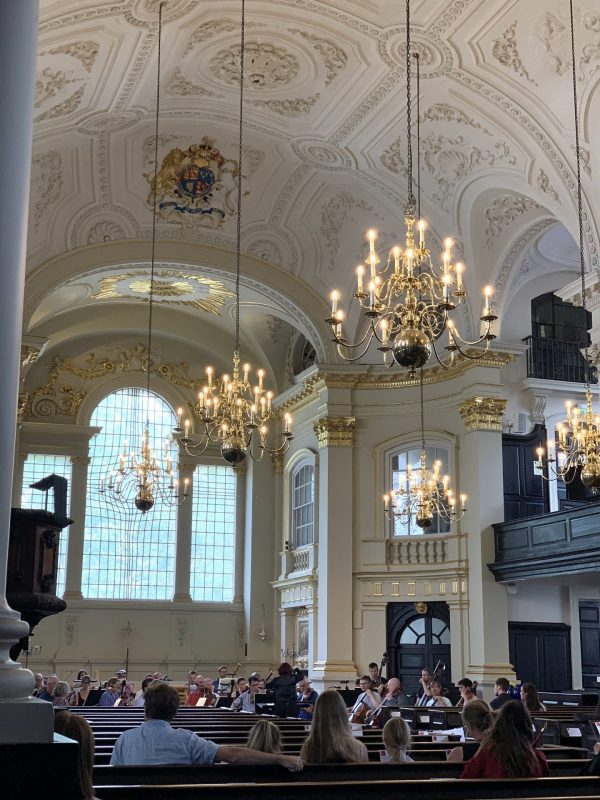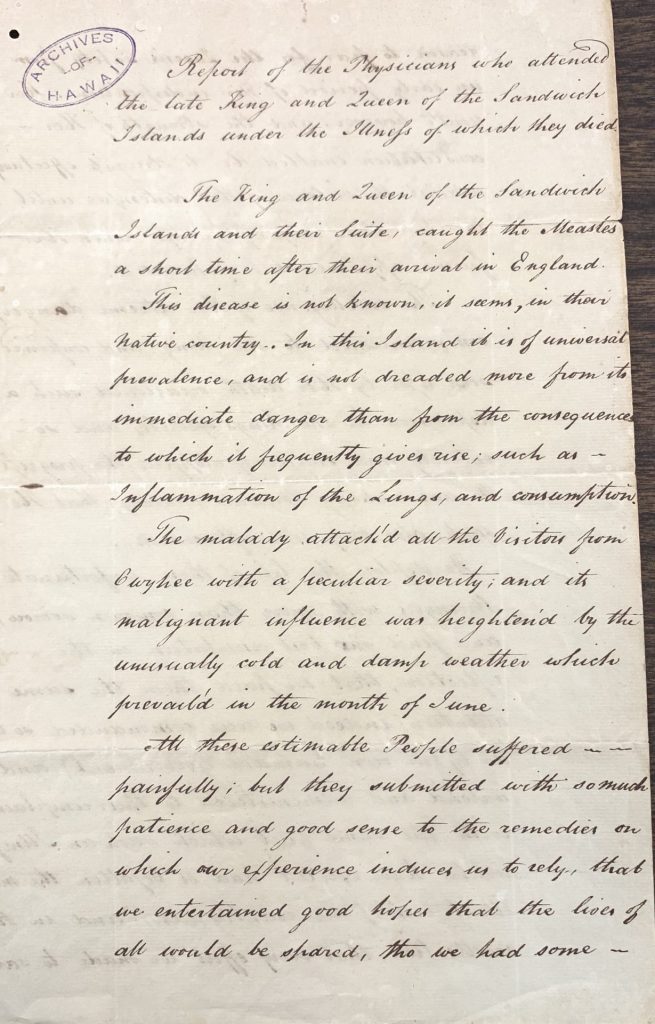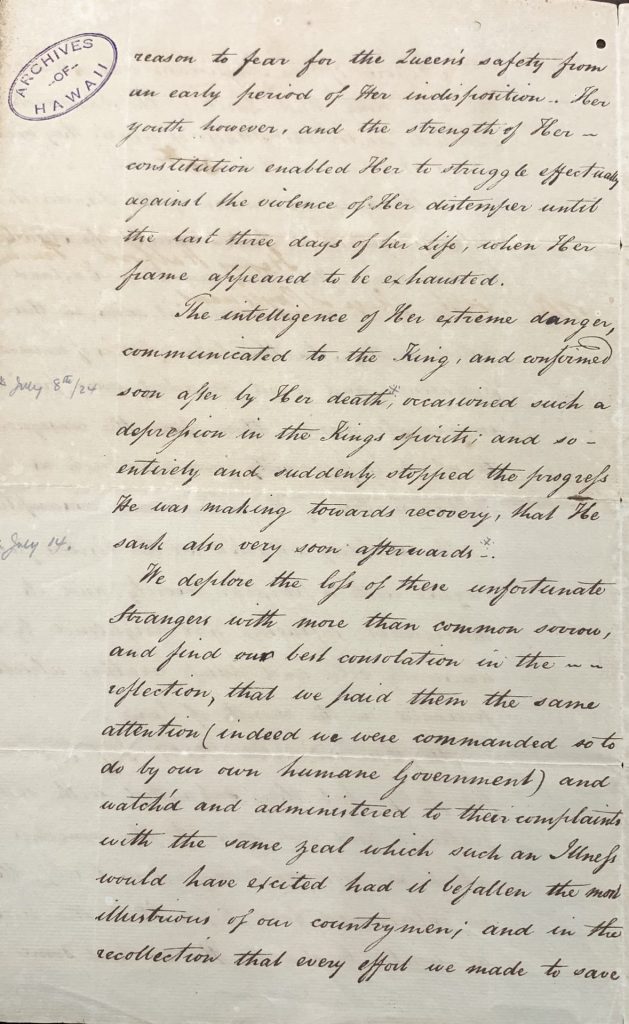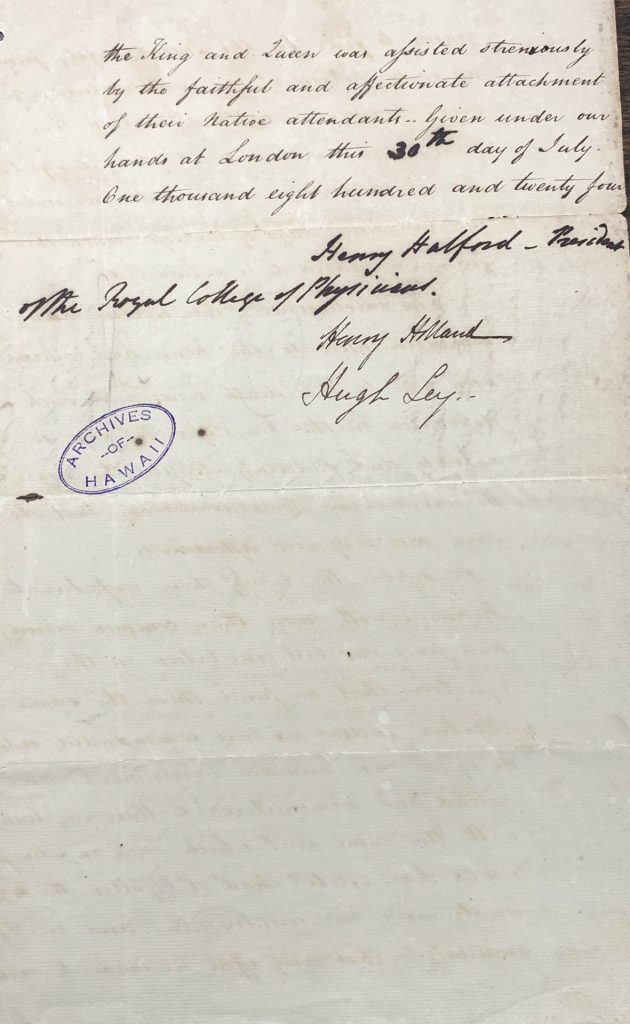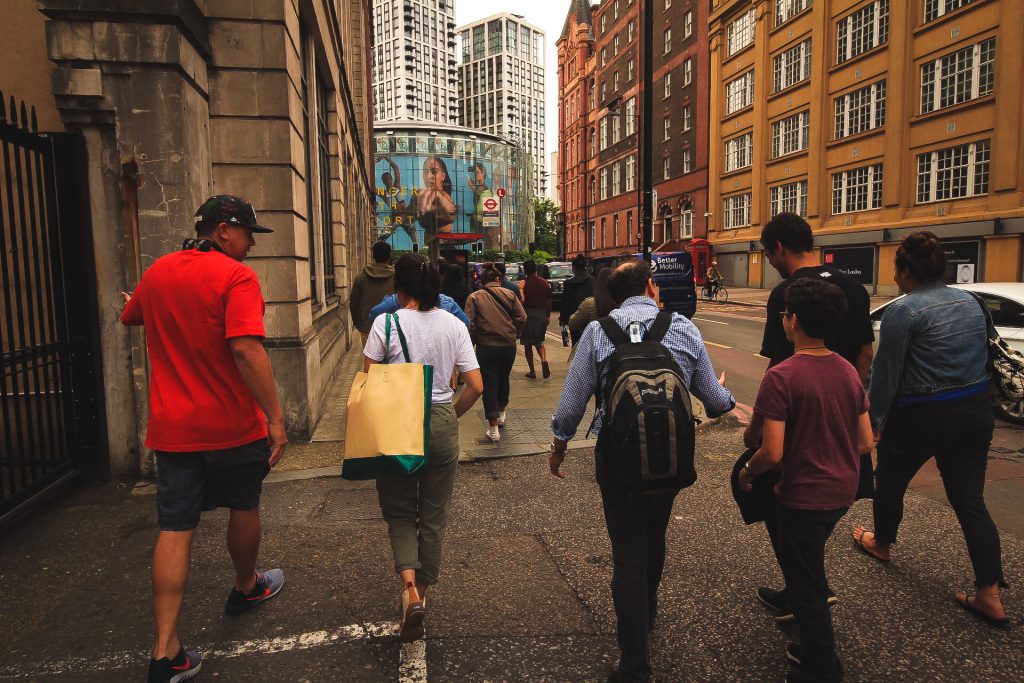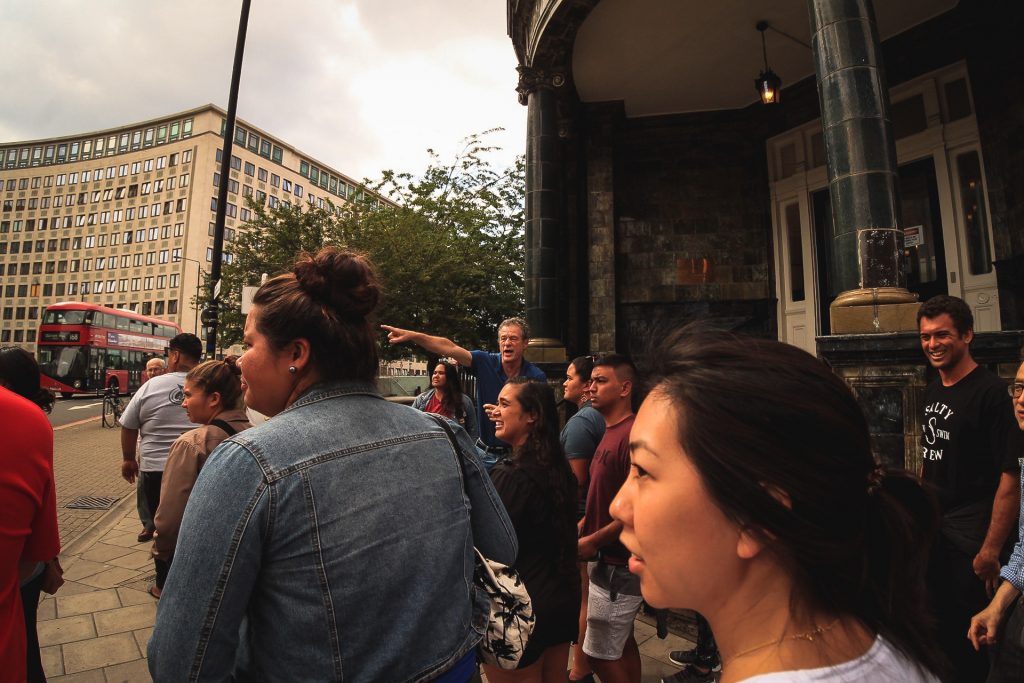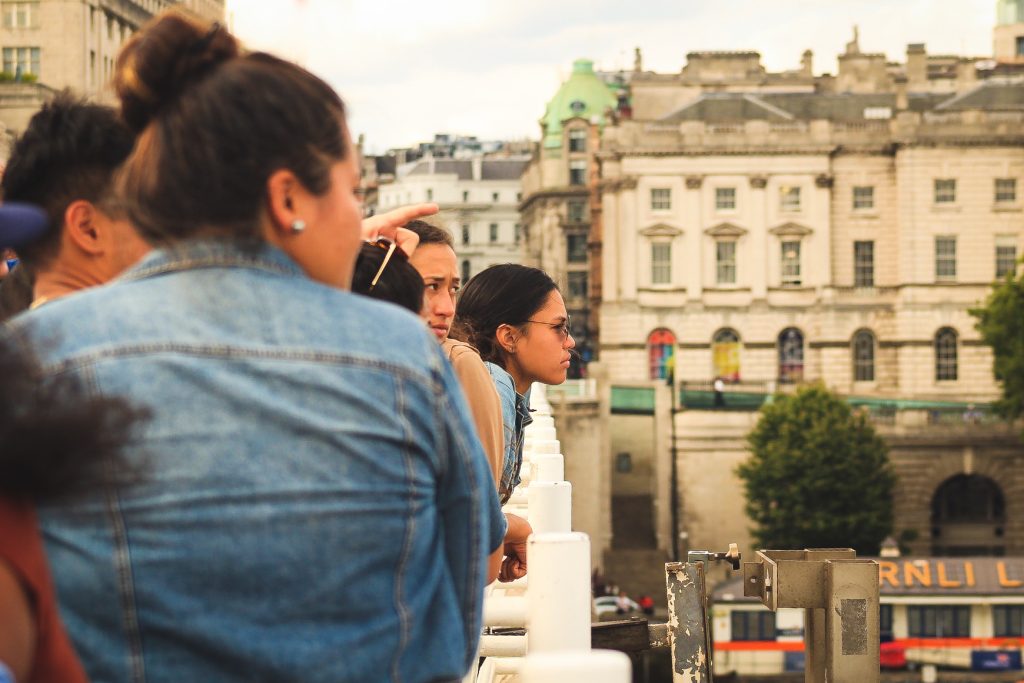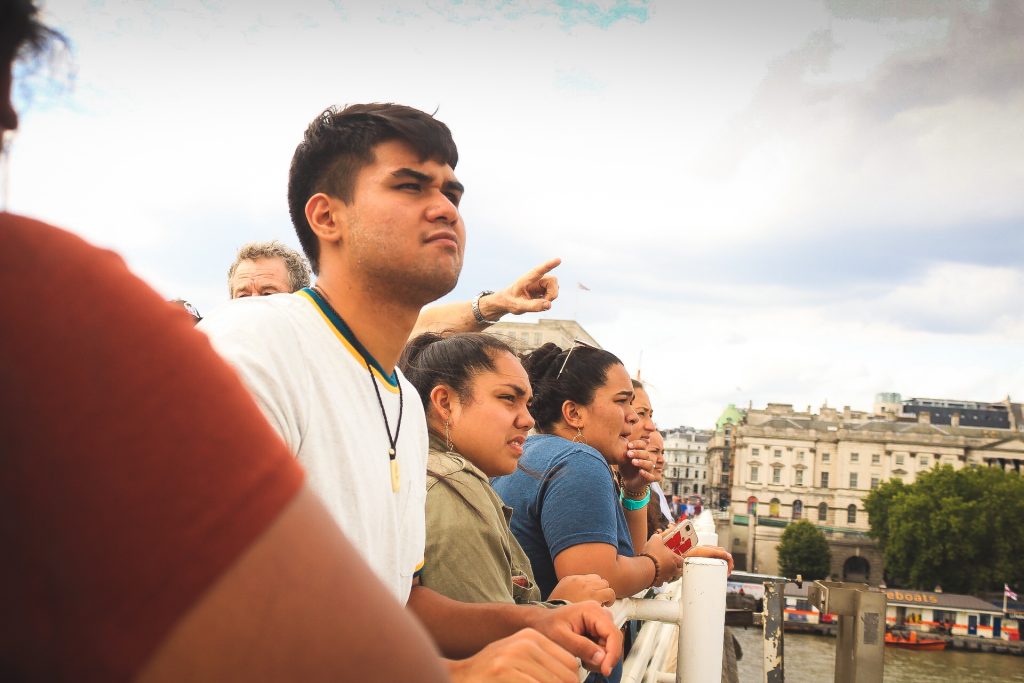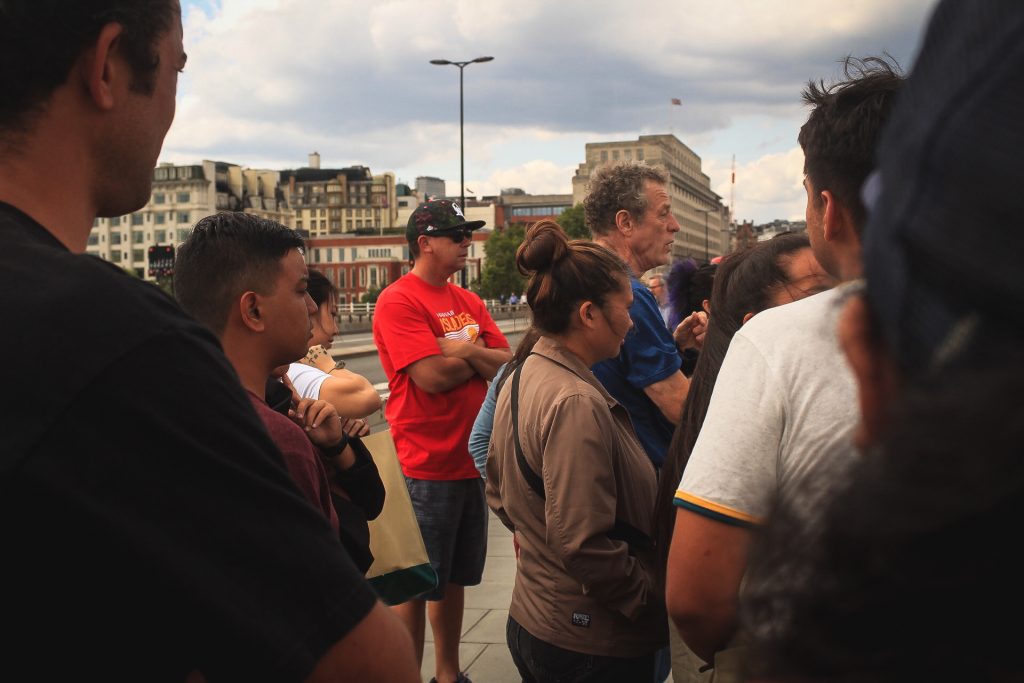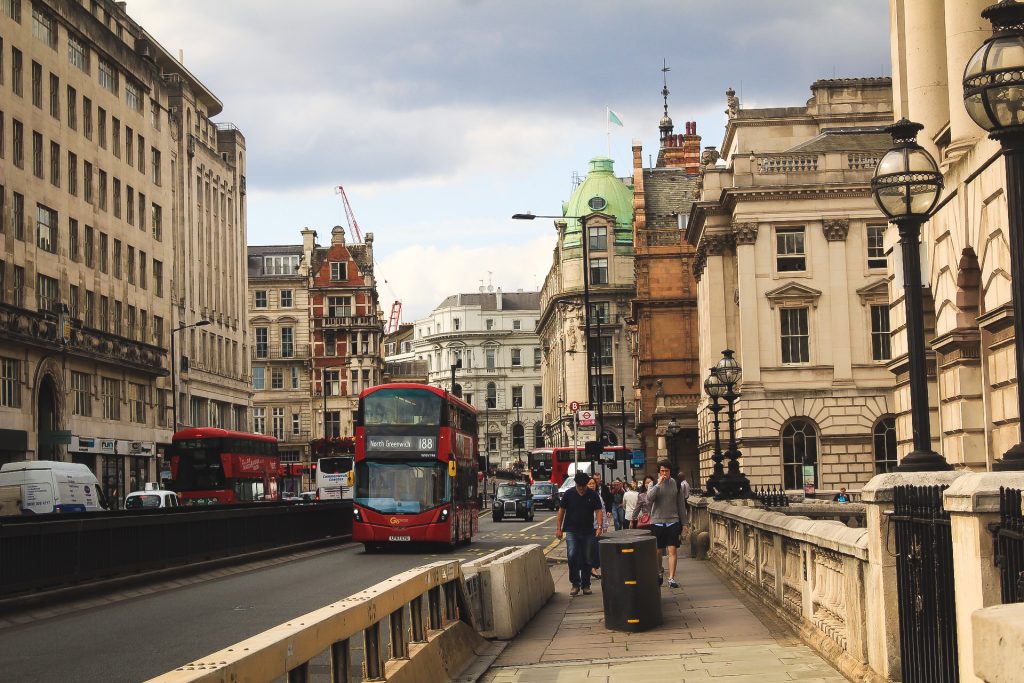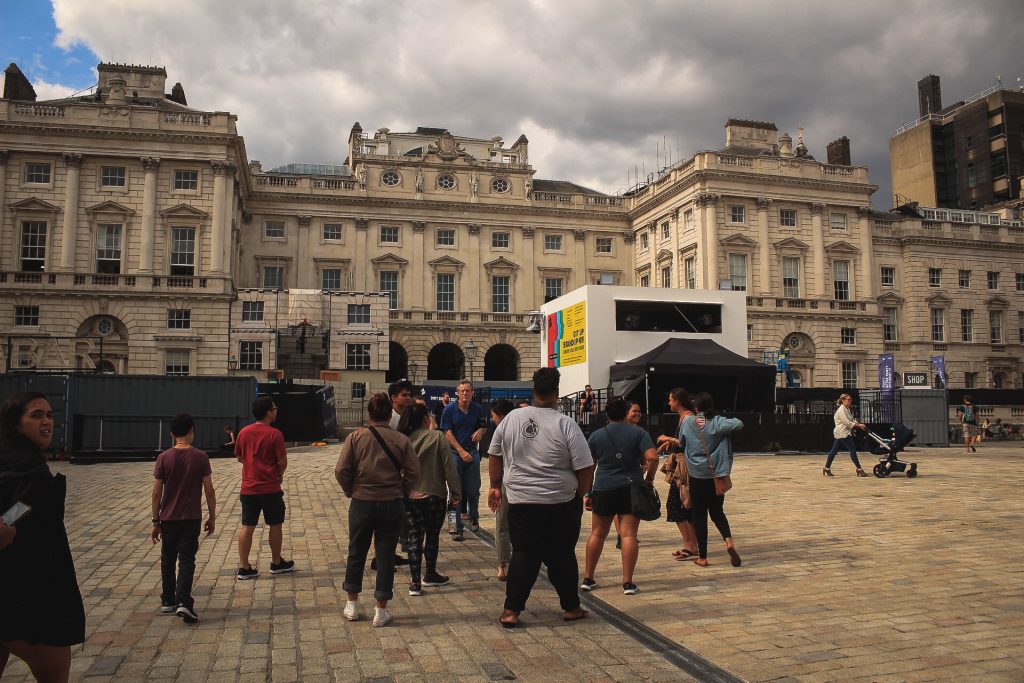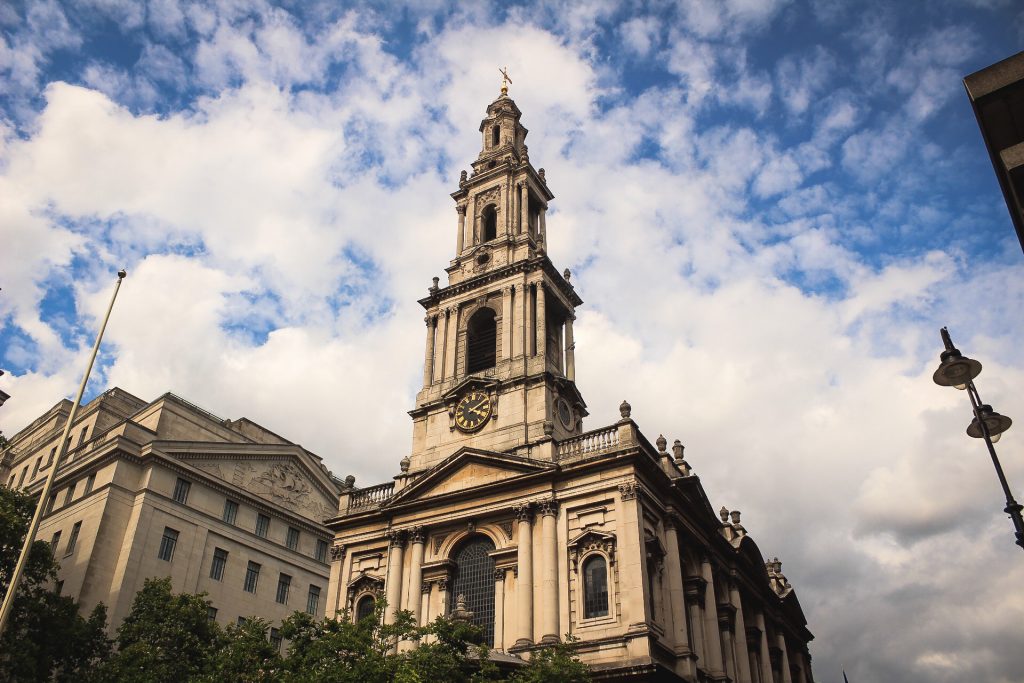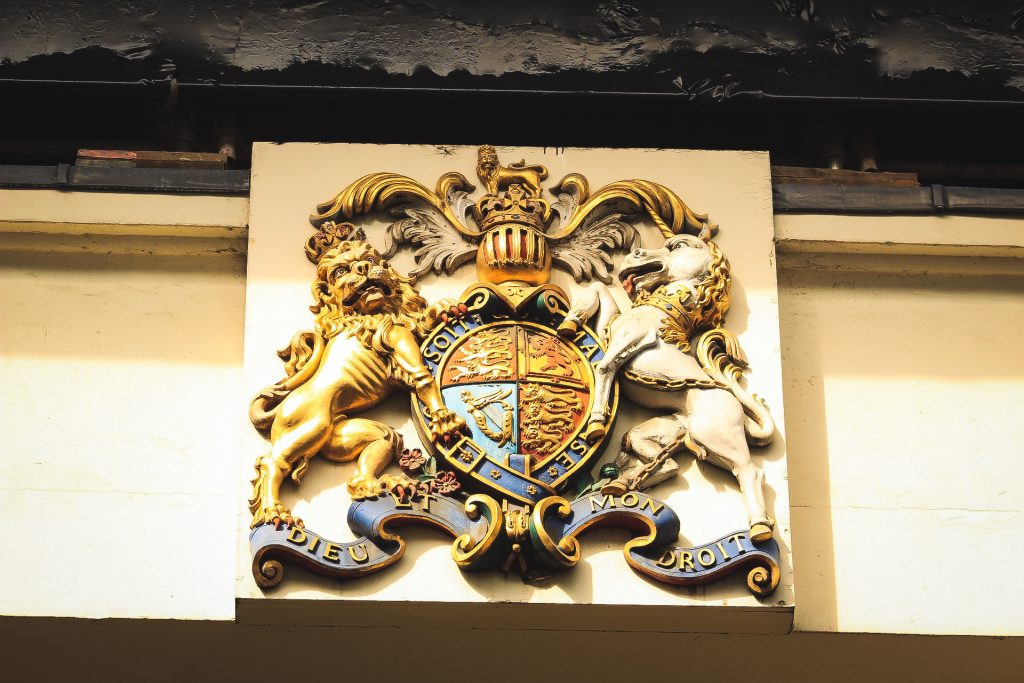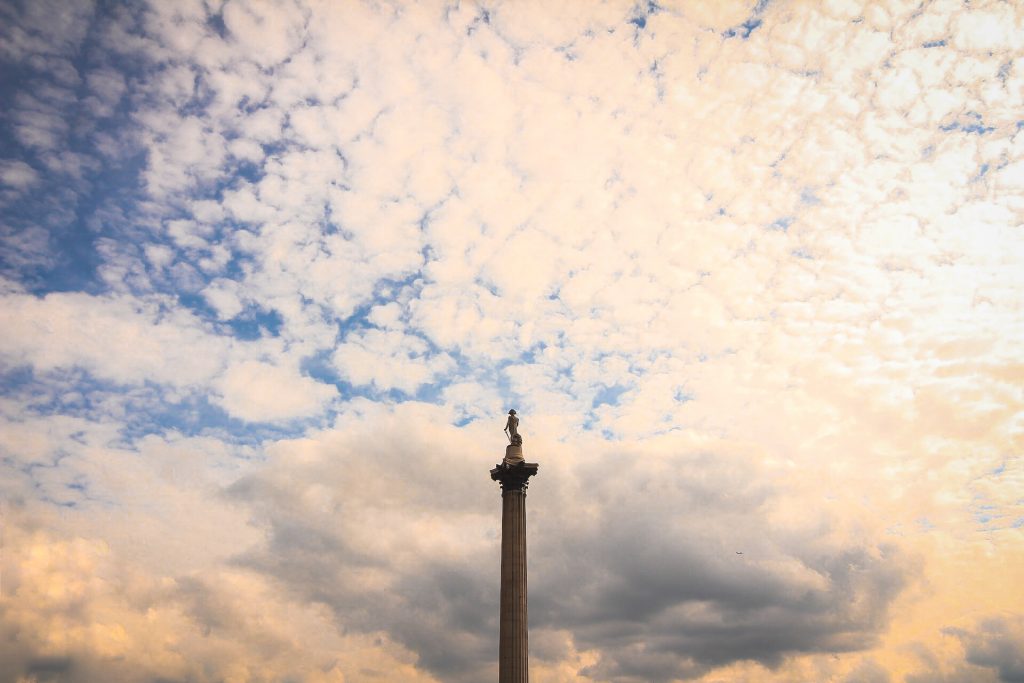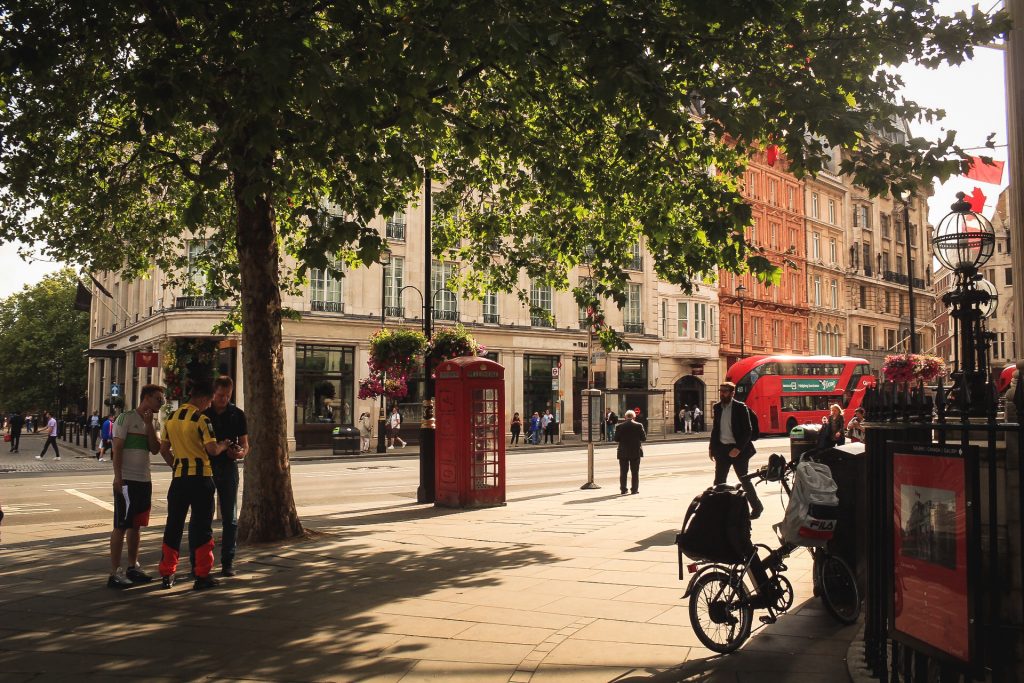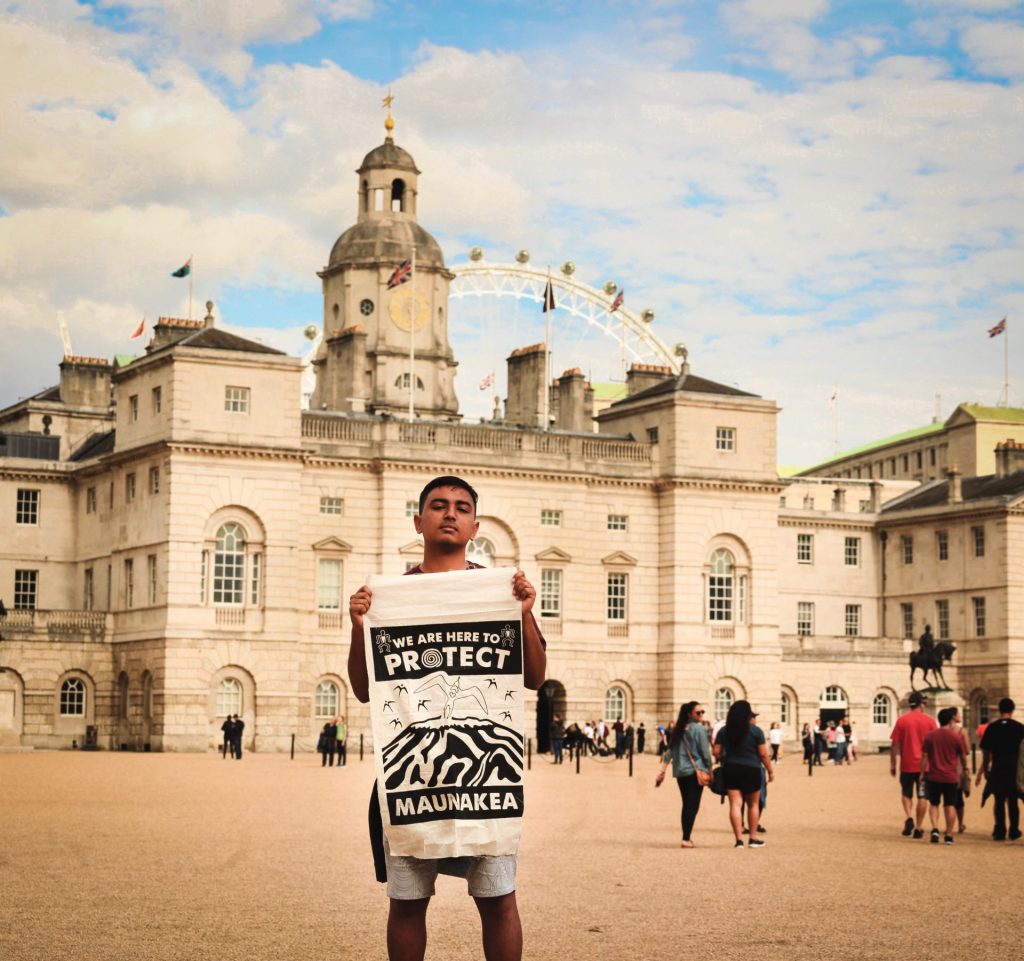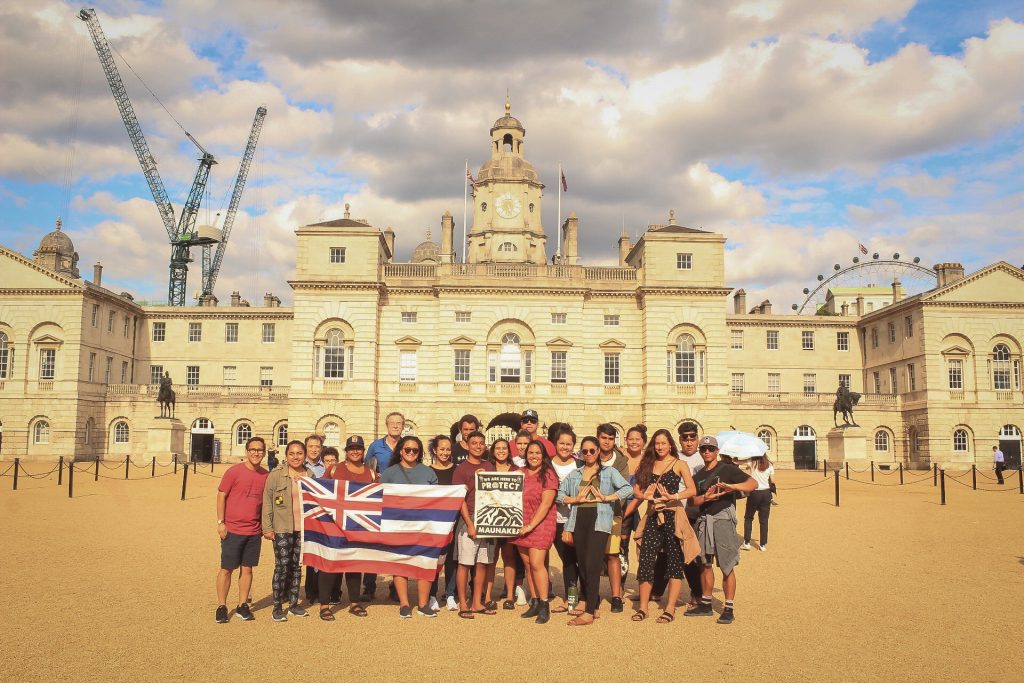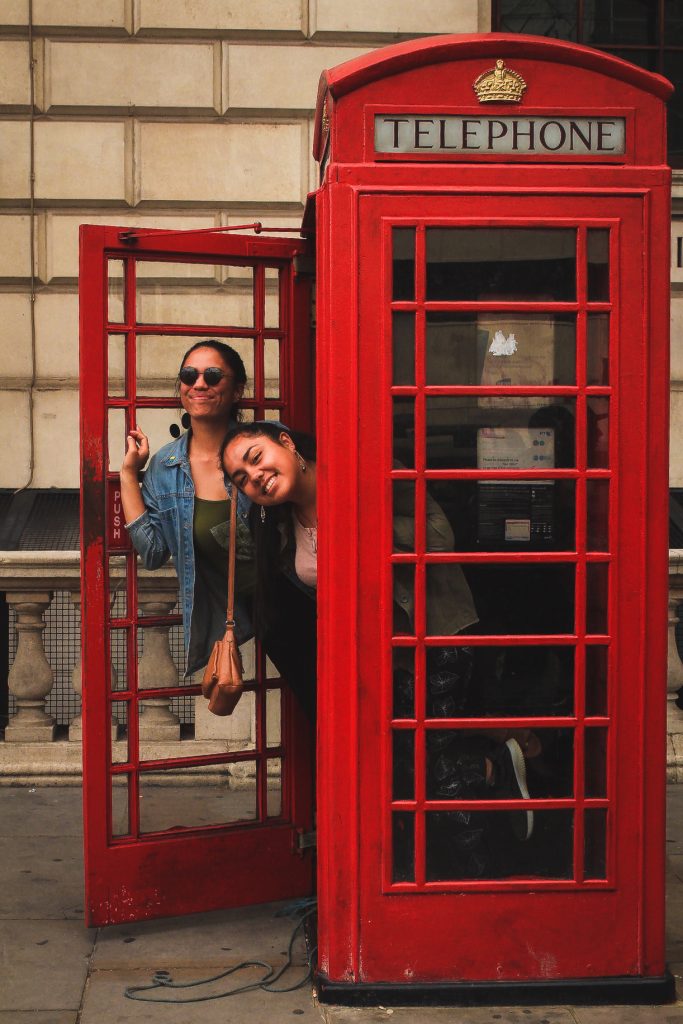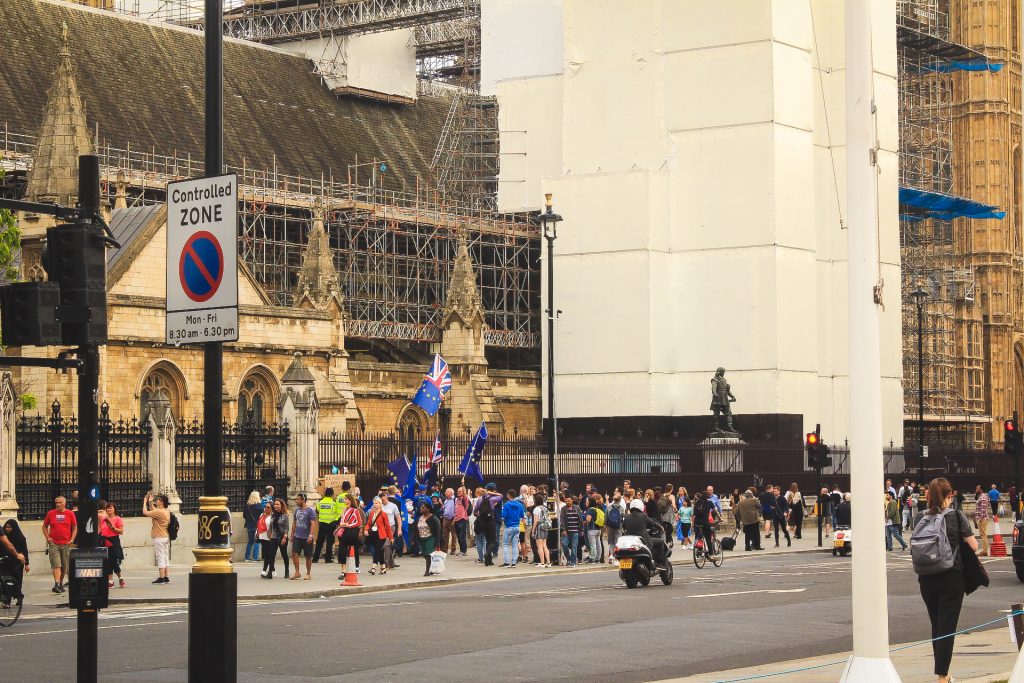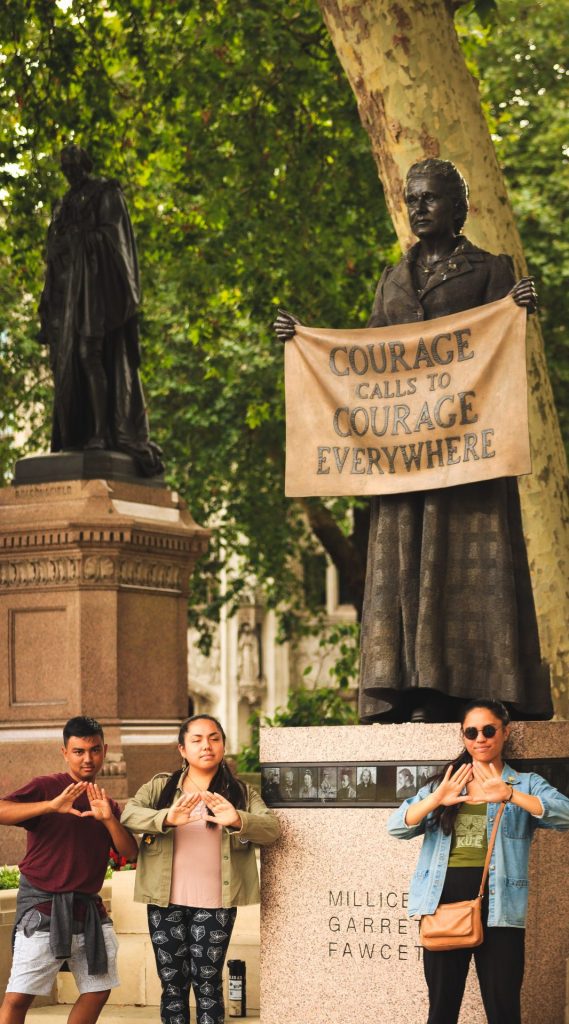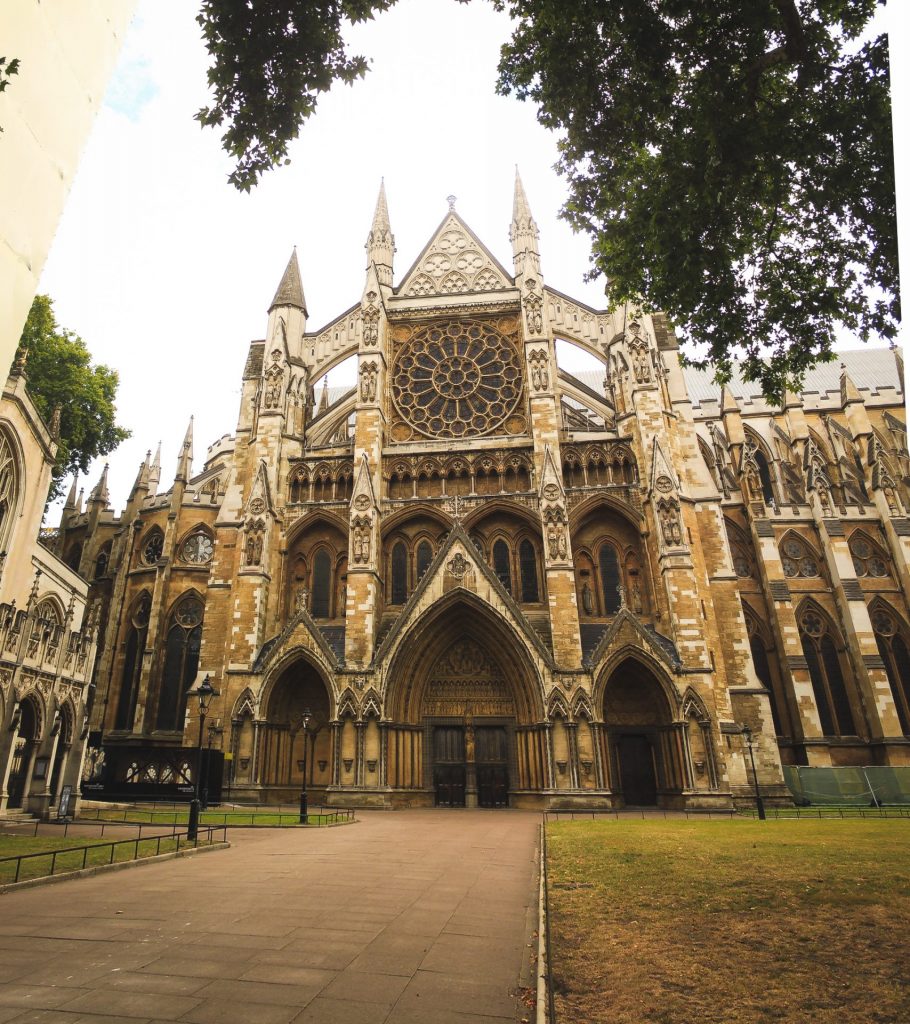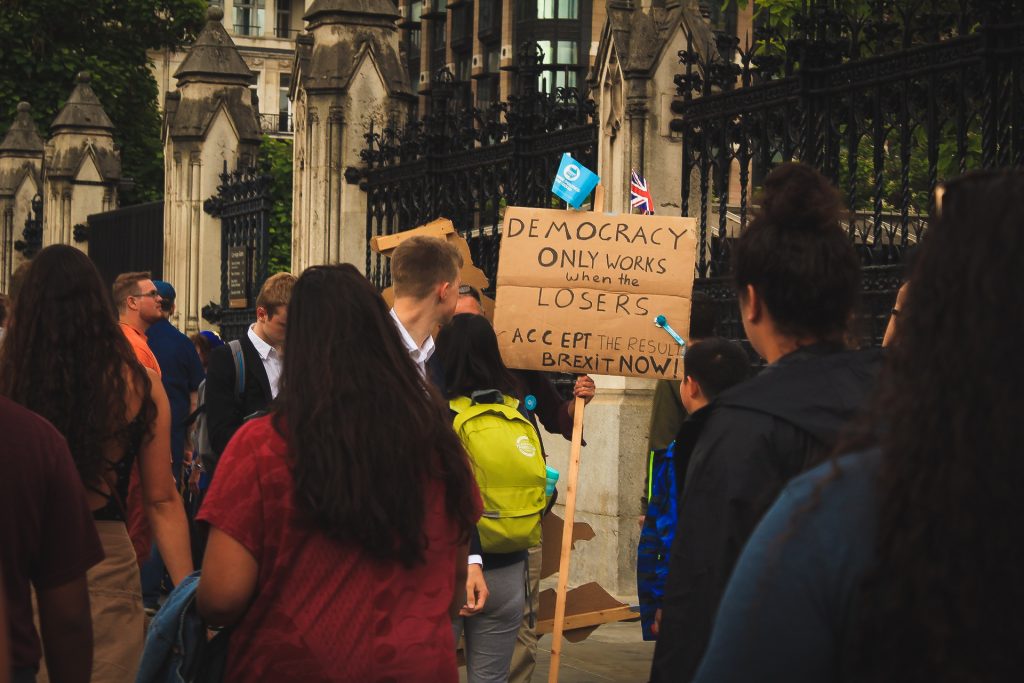Na Allyson Nuesca Franco, MA Student in Educational Foundations
Aloha mai kākou mai ka puka ʻana a ka lā i Haʻehaʻe a ka welo ʻana a ka lā i Lehua. Mahalo for joining us on our journey here in London via our blog posts! As we departed Hawaiʻi to London during the mahina of Māhealani in the malama of Mahoehope, we begin our journey with heavy hearts for our lāhui and Mauna Kea. For many of us a part of the program, we traveled to the Moku o Keawe over the weekend to be amongst our lāhui and recenter ourselves at one of our pikos, Mauna a Wākea, in defending it from the construction process of the Thirty Meter Telescope. For many of us, we call Moku o Keawe home, and for others, personal connections to the very pae ʻāina we live on as a reason to stand in solidarity with the rest of our lāhui. The understanding and love we have for our home, culture and language, to our mauna and ʻāina, to our lāhui, our experiences on the mauna around those we love in the place we love, allowed us to feel a deeper connection to our home but also made us question our leaving during a time of urgency and need for our lāhui to be together as one as we depart for Europe. Though a difficult travel to Europe, we realized that we are not forgetting our kuleana to our lāhui and Mauna during this time, rather, setting that kuleana down for a few weeks to hāpai another set kuleana to our lāhui and our future; to learn the importance of the our aliʻis’ travels around the world and the Hawaiian Youths that were sent abroad to become future leaders of an independent and progressive nation, the Hawaiian Kingdom. With that, we carry our lāhui where ever we go and continue this journey for our future keiki, born and unborn, to London in learning all that we can so we may continue serving our communities back home.
The first day here in London was a great yet crazy day. Getting used to the customs of England and lack of sleep over the past two days have been draining, yet we have learned so much in the time we have been here in London. Mahalo a nui iā Craig Howes for today’s tour of London, a great introduction of the place we will call home for the next six days. Being foreign to this place yet we currently familiar in so many ways by the followings of our kupunas’ steps abroad, we visited places many of our aliʻi visited at different times of the 19th century and places they would’ve visited while they were here in Europe. Today’s huakaʻi around London, the walk from our living quarters to Covent Gardens to White Hall, the exploration around the city of our aliʻi and kupuna were present through Craig Howe’s moʻolelo of the place we have only heard of through stories that have grounded us in the places we will visit through this trip. To visit the places that Liholiho ʻIolani (Kamehameha the 2nd) and Kamāmalu have visited, Convent Gardens, Royal Theater Drury Lane to Saint Martins in the Fields where they were laid to rest was eye-opening for me and the rest of the group, I would say. Through exploring these places helped us to better understand the places our kupuna explored while in London, especially at such an early time in the 19th century. Through this tour of London, I was better able to connect to the moʻolelo of Liholiho, Kamāmalu, and their Royal Suite while they visited London to a real place that is still standing today. With that, to explain more about the research project I have been studying and learning more about, I have included research about the topic I have chosen, Liholiho ʻIolani, Kamāmalu, and the Royal Suite’s Visit to London in 1824.
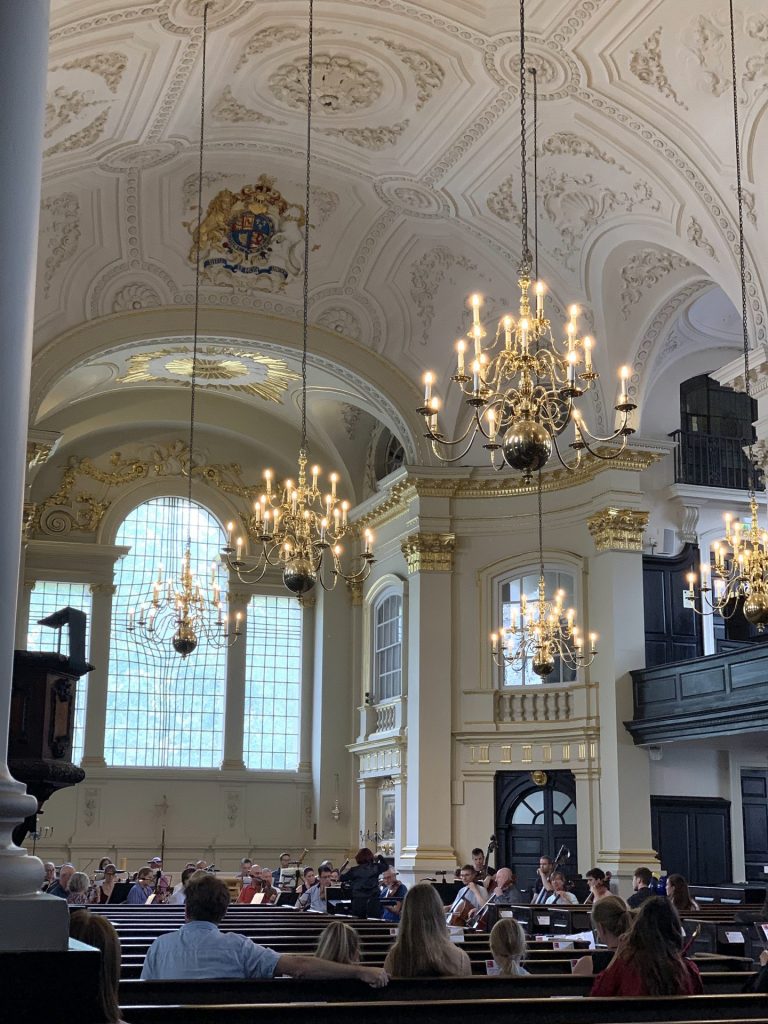
St. Martin’s in the Field 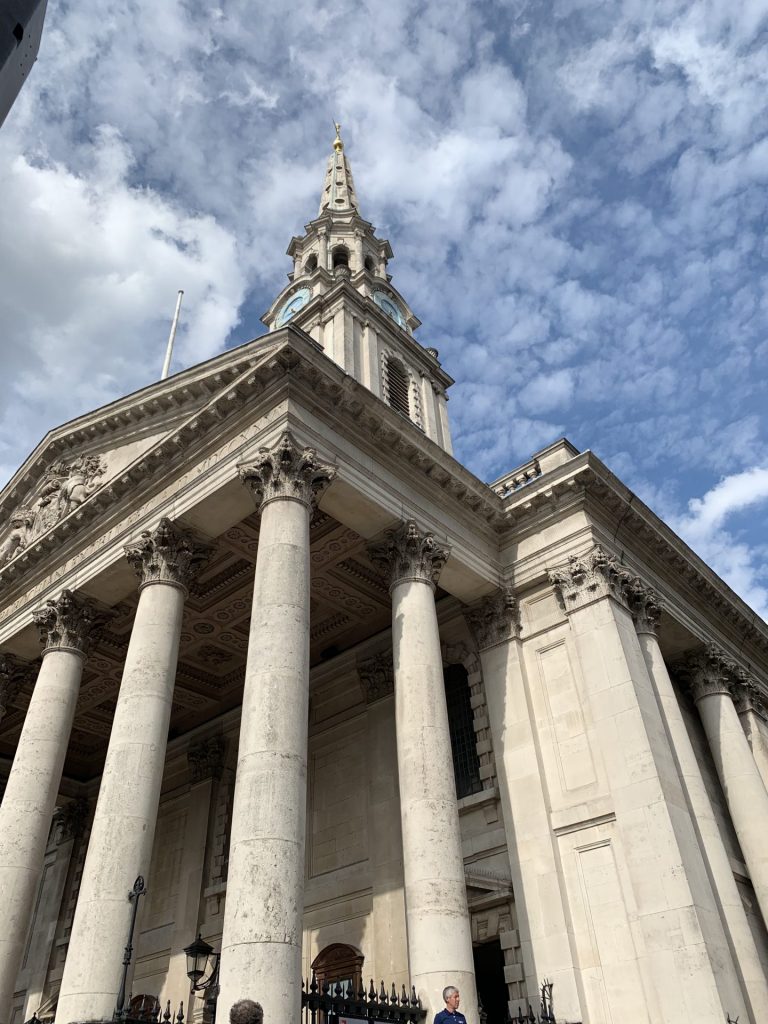
St. Martin’s in the Field 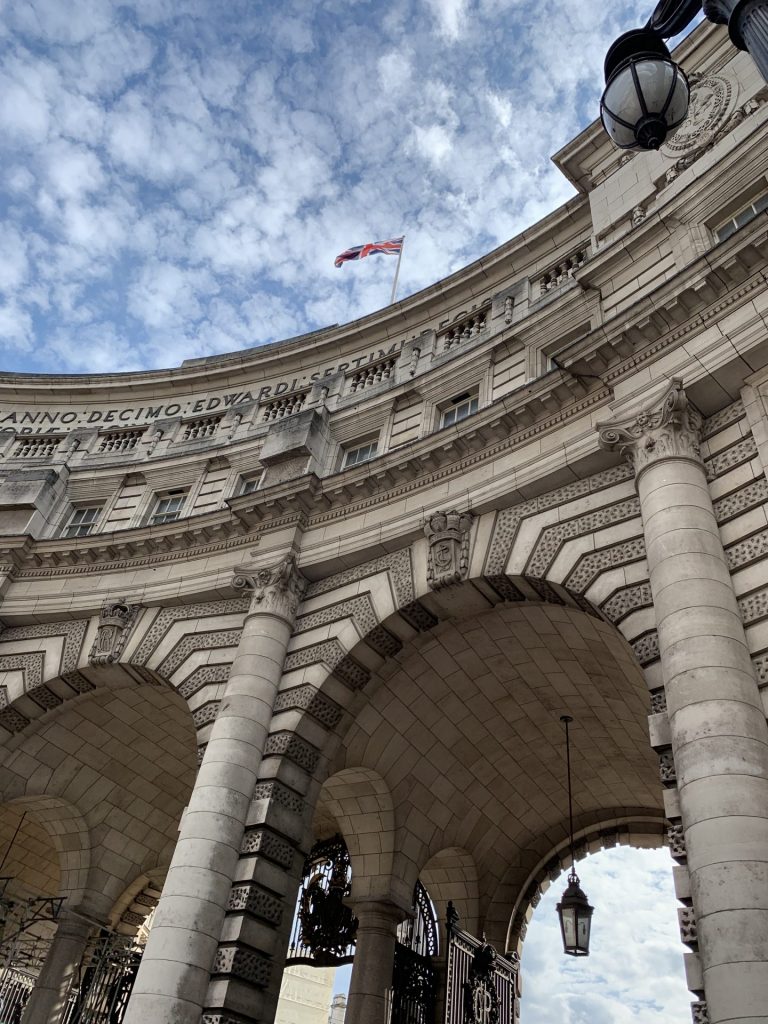
Exploring London 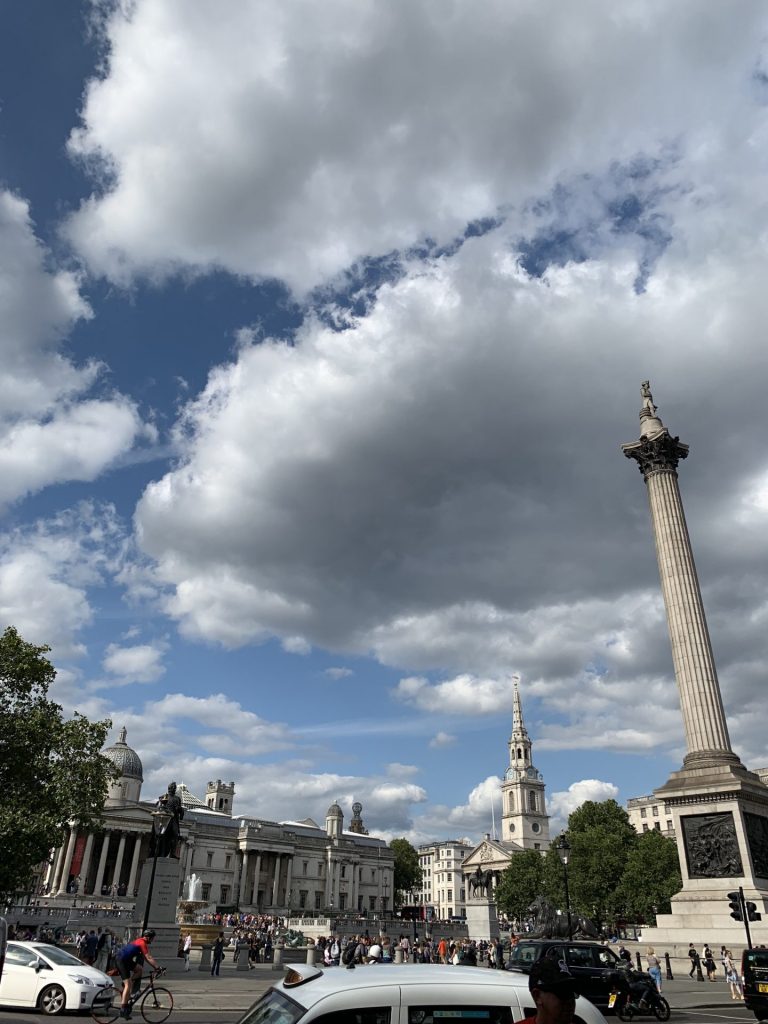
Exploring London 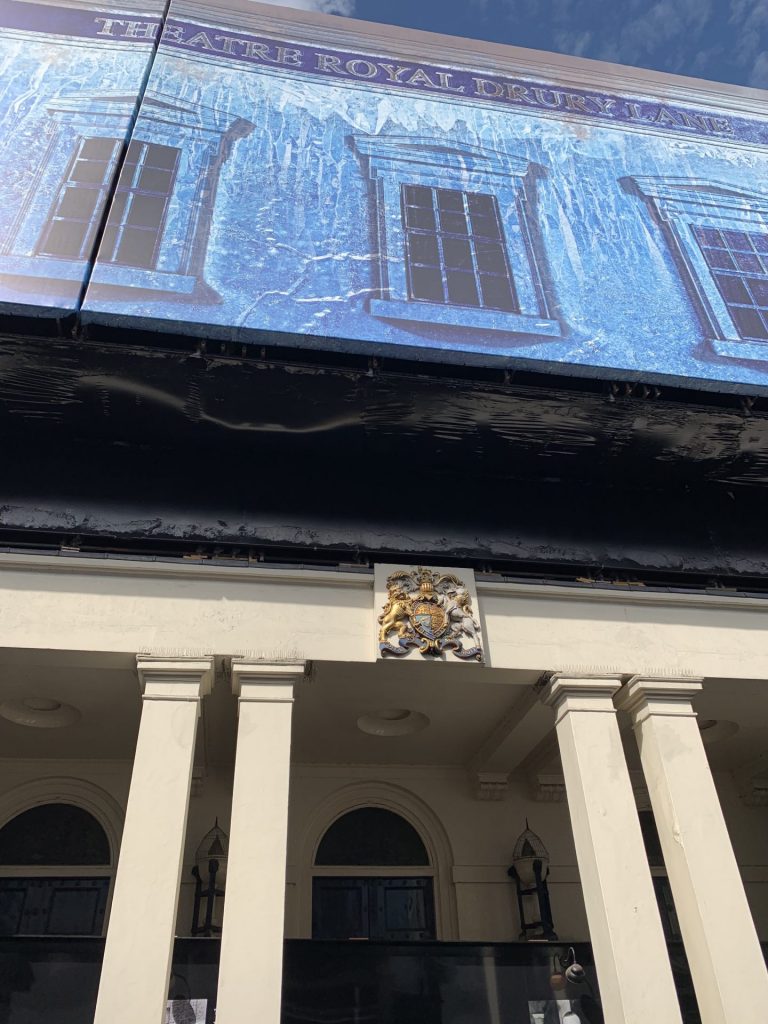
Theatre Royal, Drury Lane 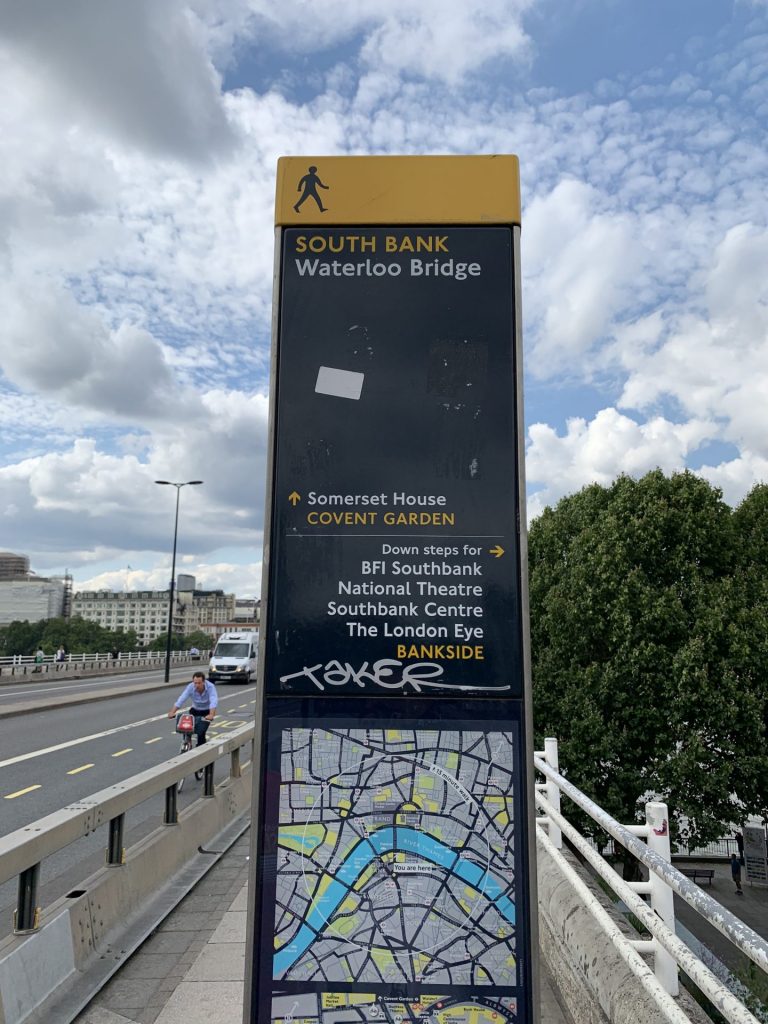
Exploring London 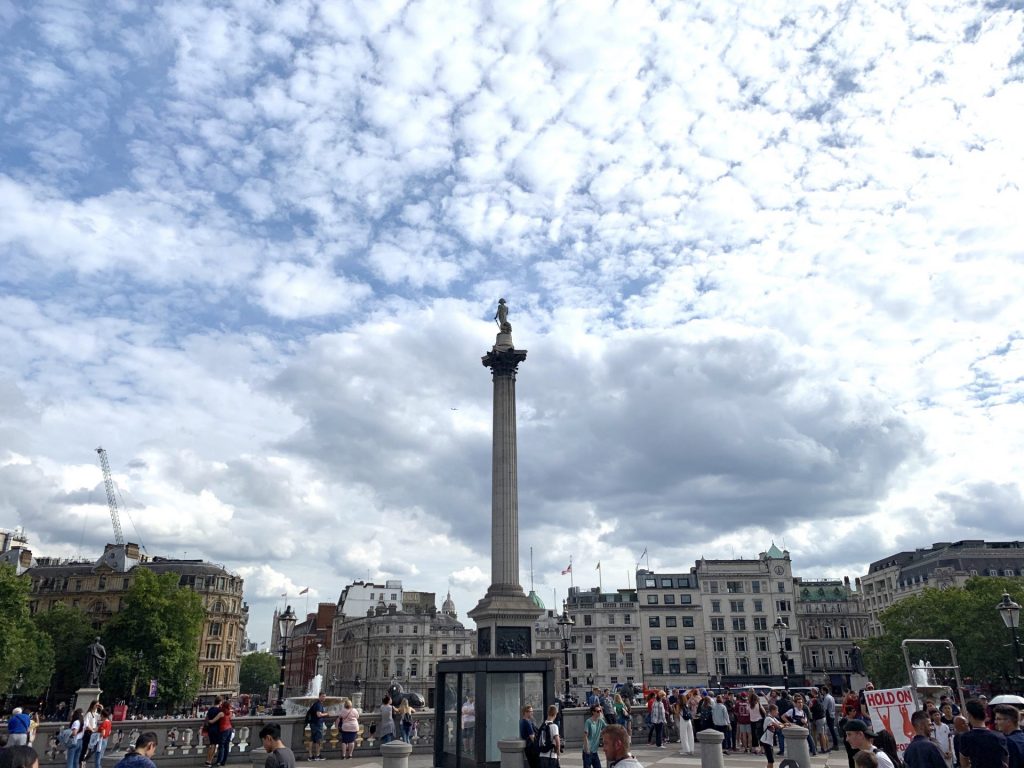
Exploring London
Liholiho ʻIolani, Kamāmalu & the Royal Suite’s Expedition to London, 1823-1825
“Aroha ino oukou, e nowae makou a ike ke Rii, lovaa mai ka kapono nui, hoi aku makou. Aroha, ʻIolani.
I love you all dearly. We will remain until we see the King. After we obtain our objective which will be of great benefit for us, then we will return. Aloha, ʻIolani (Liholiho – Kamehameha II)”

Liholiho ʻIolani writes to Paaluwa (believed to be Kalaimoku), Kaʻahumu (Kaʻahumanu) and his younger brother, Kauikeaouli, upon their arrival to England during the malama[1] of Mahoemua (June) 1824, describing their journey to England, the loss of few kānaka who joined him on his journey and hope for Hawaiʻi as they await their meeting with the King of Great Britian[2]. The last sentence written by Liholiho quoted above expresses his love for his lāhui back home, though a difficult and long journey away from home, the sacrifice to traveling and securing the protection for future of his lāhui. We see this an international diplomatic mission completed at such at early time of the kingdom, during the beginnings of foreign arrival to Hawaiʻi, yet our aliʻi understanding the importance of international relations and engagement to strengthen our own country.
Liholiho ʻIolani, also known as Kamehameha II, embarked on a journey, setting sail to a foreign land to achieve one thing: the continued protection of Great Britain under the rule of King George IV as the invasion of whalers landed in Hawaiʻi, overtaking the waters and economy of the Hawaiian Kingdom. After the passing of his mother, Keōpūolani, while he was on Maui, declared to the other aliʻi (chiefs) his desire of traveling to England. With his declaration came concern and question from other chiefs, hesitate of the aliʻi nui’s travels to England. Though many did not want him to leave, even holding him back during his departure on the L’Aigle to England, the chief set his departure with Valentine Starbuck, captain of LʻAigle.
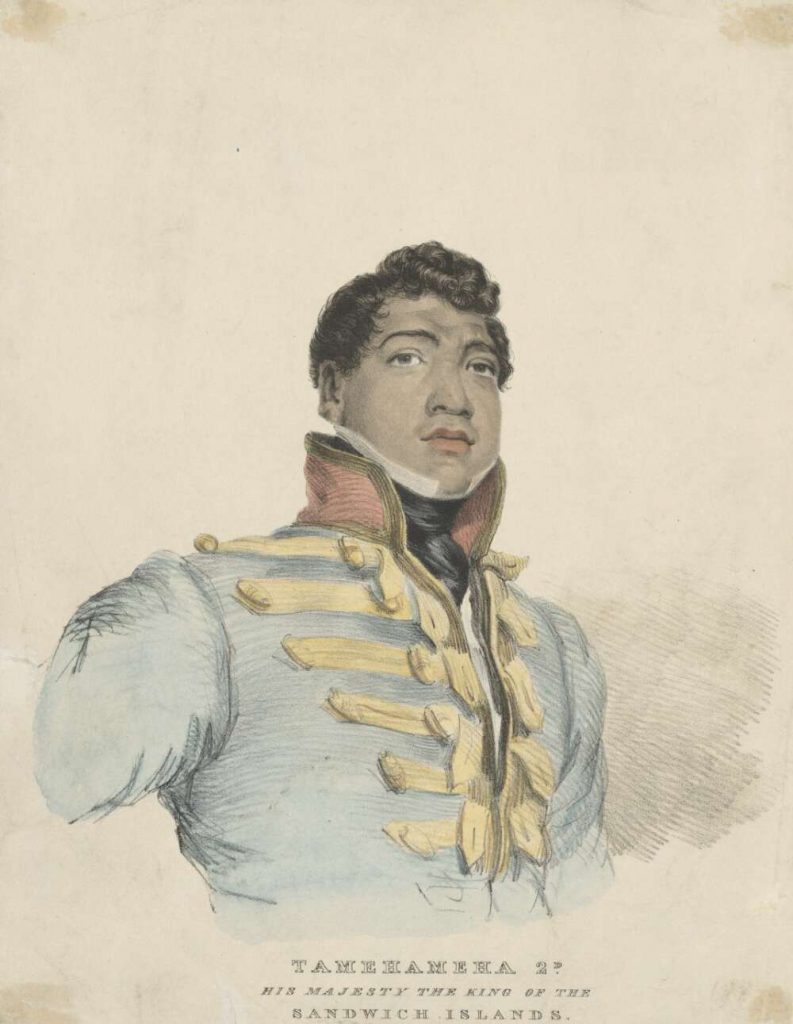
Liholiho ʻIolani, also known as Kamehameha II 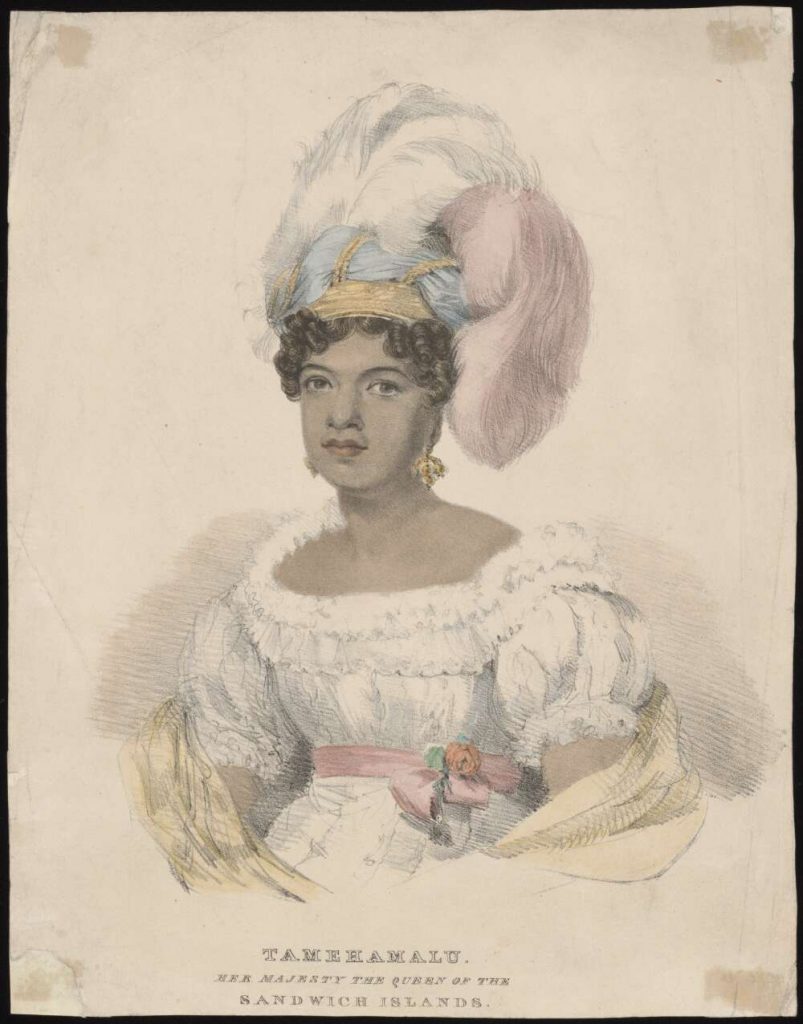
Kamāmalu, Wife of Kamehameha II 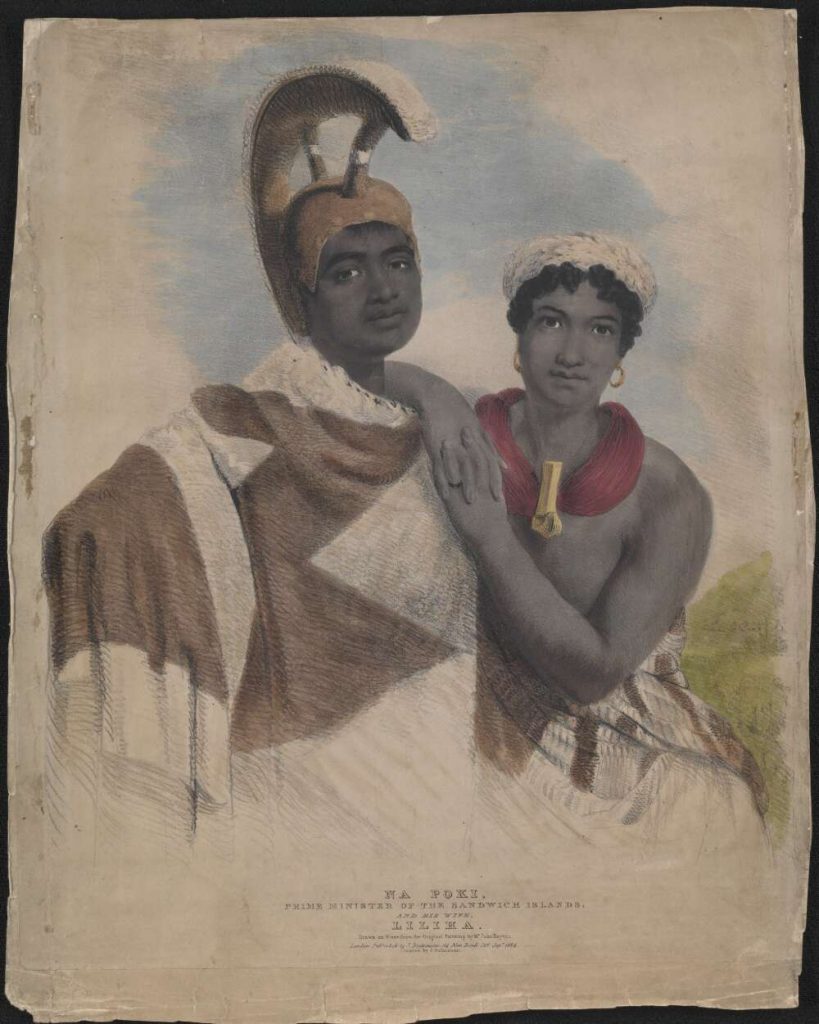
Boki, Governor of Oʻahu, and his wahine, Liliha 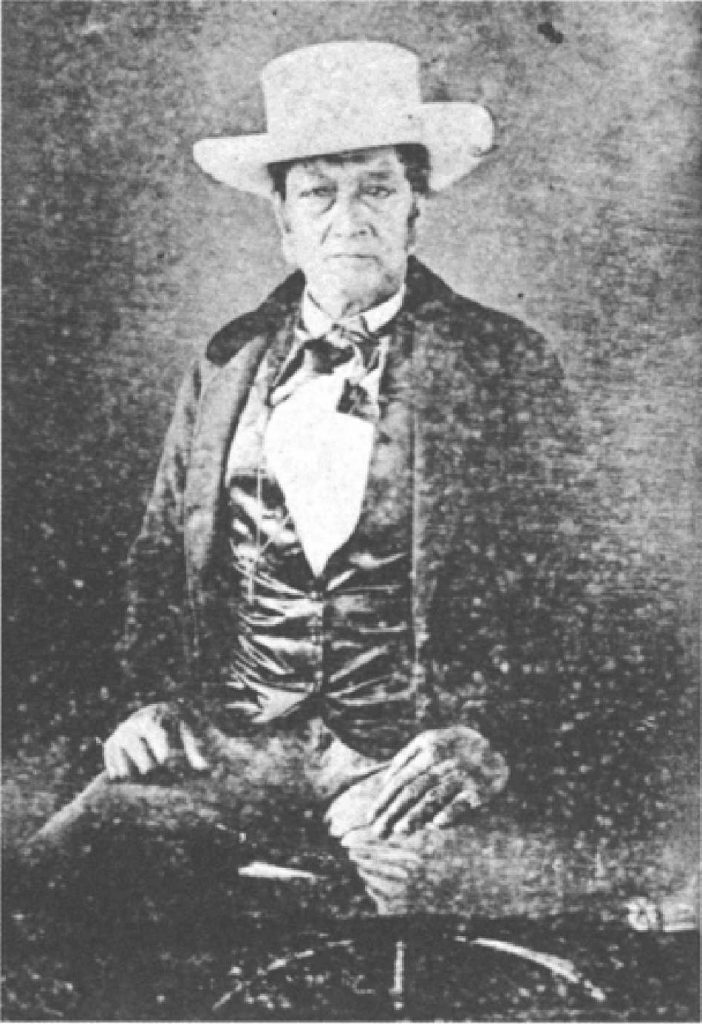
James Young Kanehoa, son of John Young 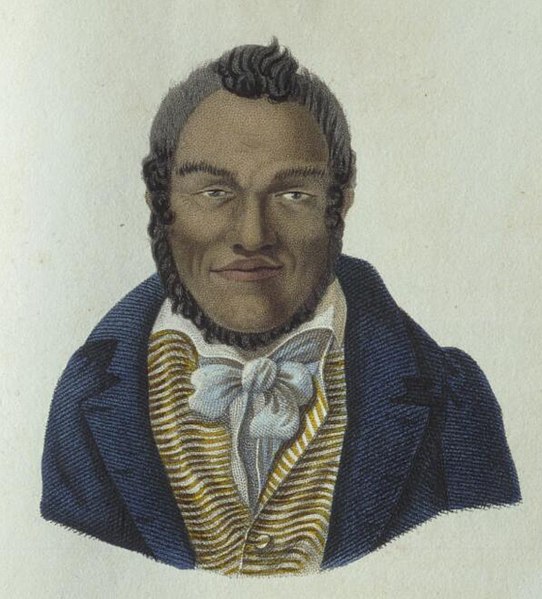
Naihe Kūkui Kapihe 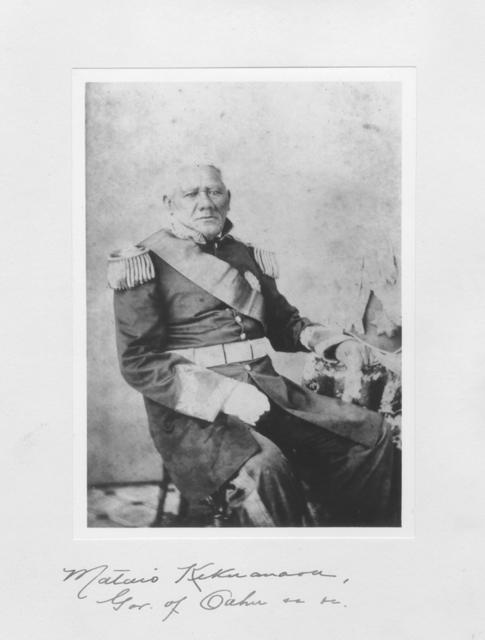
Mataio Kekūanāoʻa
Photo Credit for Liholiho, Kamāmalu, Boki & Liliha as well as Naihe Kūkui Kapihe images to National Archives of Australia, Mataio Kekūanāoʻa photo credit to Hawaiʻi State Archives.
Liholiho set sail, departing Hawaiʻi and his people on November 27th, 1823 but he did not embark on his journey alone. He was accompanied by Queen Kamāmalu and his royal suite[3], Boki Kamaʻuleʻule (governor of Oʻahu) with his wahine Liliha (daughter of Hoapili), Kauluhaimalama (son of Kēkūhaupiʻo), Manuia (son of Kaulunae), Mataio Kēkūanaoʻa (son of Nahiolea), Naihekukui (Kapihe, son of Hanakahi), Noukana (son of Kamanawa), Naʻaiweuweu (son of Kekumuʻino); James (Young) Kanehoa, son of John Young, and John Rives, a Frenchman and interpreter on the trip to London[4]. As they departed from the waters of Hawaiʻi, Kamāmalu, before boarding the vessel herself, wails these words as the departed for their long journey from home.
| E ka lani e, e ka honua e, E ka mauna e, e ka moana e, E ka hu e, e ka makaʻāinana e, Aloha ʻoukou. E ka lepo e, aloha ʻoe, E ka mea a kuʻu makuakane i ʻeha ai e, Aloha ʻoe, E ka luhi a kuʻu makuakane i ʻimi ai e. Ke haʻalele nei maua i ko luhi. Ke hele nei no au mamuli o ko kauoha, ʻAʻole au e haʻalele i kou leo. Ke hele nei no au ma ko kauoha i ʻōlelo mai ai iaʻu. | O heaven! O earth! O mountains and sea! O commoners and people! Farewell to you all. O soil, farewell! O land for which my father suffered, Farwell, O burden that my father strived for. We two are leaving your labors. I go in obedience to your command, I will not desert your voice. I go in accordance with the words you spoke to me. |
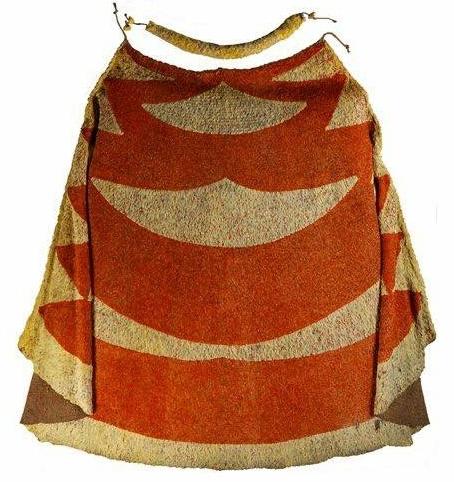
Photo Credit: National Museum of Brazil
Honoring their fathers’[5] wishes to secure and continued the promised protection by Great Britain, they set sail South of Hawaiʻi around the southern tip of South America, where they make a pit stop at Rio de Janeiro, Brazil, on February 15, 1824 to meet with Emperor Dom Pedro, an 18-day detour to Brazil[6]. What resulted in this 18-day detour is the exchanging of gifts between Brazil and Hawaiʻi, a sword and ring gifted to the King and Queen of the Sandwich Isles while Liholiho and Kamāmalu gift the emperor with an ʻahuʻula, feather cloak of high ranking made of red ʻiʻiwi and yellow ʻōʻō feathers, and a yellow lei hulu by the Queen to the Emperor.
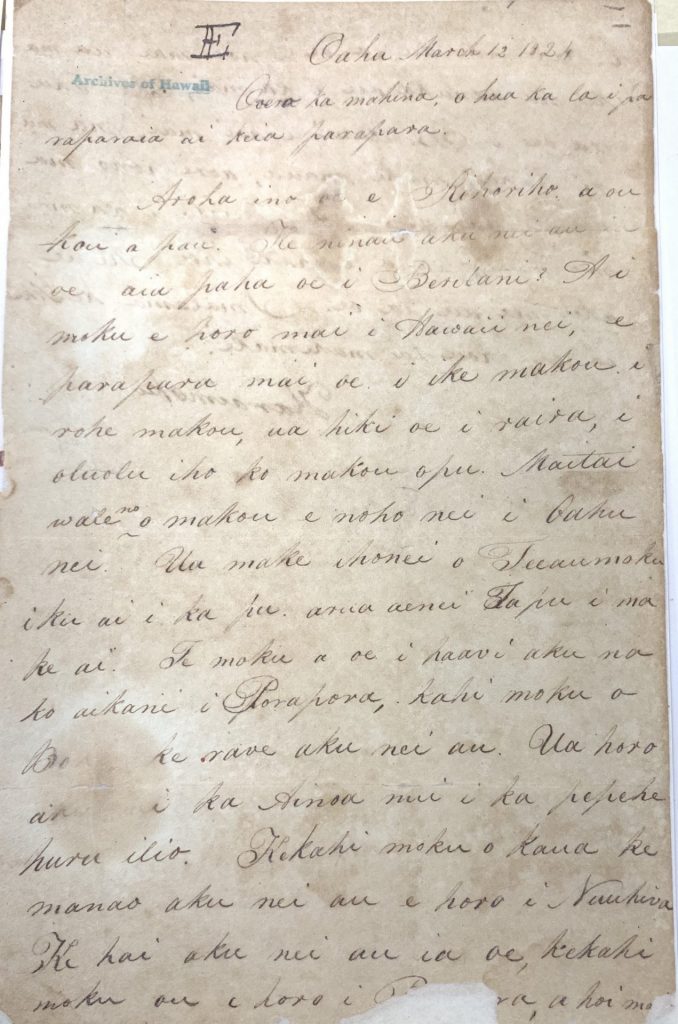
With their departure, they carried home with them everywhere they went. Home was also calling for them as well. A letter from Karaimoku (Kalaimoku or Kalanimoku), prime minister of the Hawaiian Kingdom under the rule of Kamehameha I, Kamehameha II and beginnings of Kamehameha III) to Liholiho, asking him about his arrival to England as well as updating him about the current happenings on Oʻahu. He then goes on to note “ua make na kanaka ou i ka mai, Ike aku ia oe i Beritani e hoi mai ma muoi, paha make maua, aore pono ma nei”, that in Hawaʻi, things were not looking too great as the continuation, perhaps, of sickness arising during this time[7]. Kalaimoku tells Liholiho he misses them dearly and to come home, seeing the changes happening in Hawaiʻi and the urgent need for care of their people. Eventually, a letter returns home to Kalanimoku from Liholiho (letter stated in the intro to this blog), which declares their arrival to England, as well as his updates of their travels, a few months later.
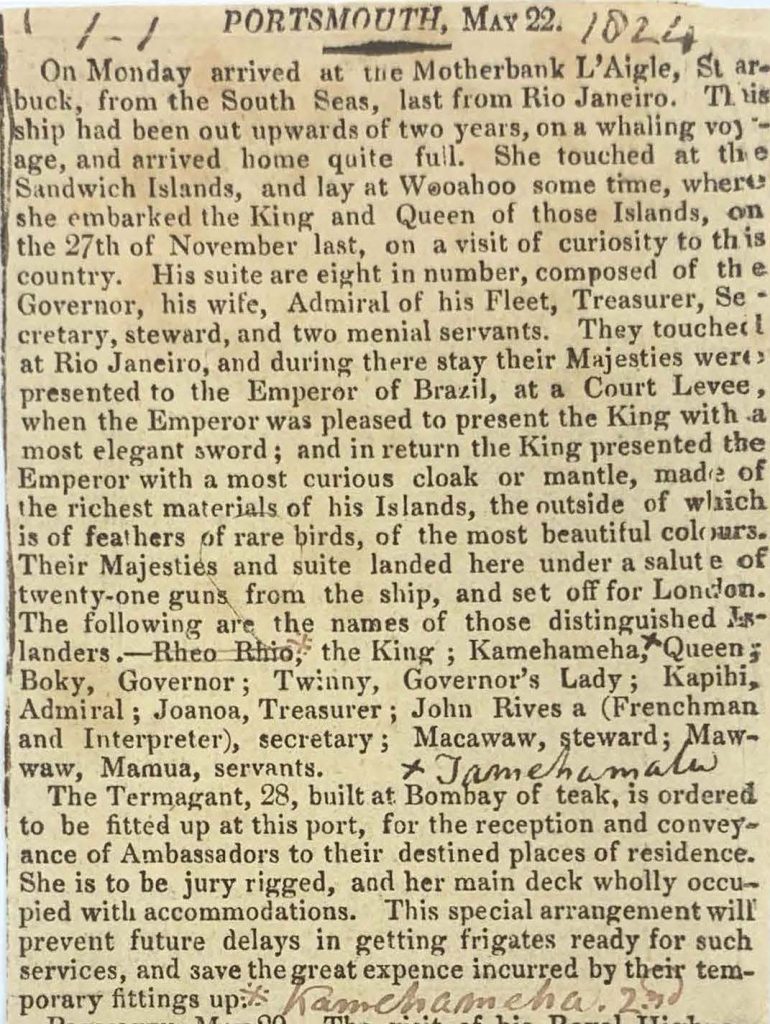
Courtesy of the Hawaiʻi State Archives.
When Liholiho mā[8] arrive in Portsmouth, England on May 17, 1824, they are greeted by multiple British presses interested in the arrival by the King and Queen of the Sandwich Isles to England. The L’Aigle landed “under a salute of 21 guns from the ship”, all reported by press of The Times, The English Chronicle and Whitehall Evening Post and the British and Protestant Chronicle. This highlight is just one of many news reports, more than 80 newspaper items, published in England from their arrival in May 1824 until their deaths in July 1824[9]. With these reports, we are able to look at Liholiho and Kamamalu’s movements through London. The arrival of our aliʻi at this time in the early 19th century shows the diplomacy and agency in our own history. The desire to obey Kamehameha I in confirming and continue the relationship between Great Britain and Hawaiʻi, we see in the diplomacy of the Hawaiian Kingdom prior to Kauikeaouli, although the promise wasn’t specifically completed by Liholiho, the act of diplomacy during this time in the 19th century is a huge thing for Hawaiʻi in showing their own agency to their own country.
For Liholiho mā, their arrival to the United Kingdom was speculated by many Brits, even their presence as royalty from the Sandwich Isles was difficult to process. Many newspapers wrote about the physical appearance of the Hawaiian royals and also the dressing of these royals being “unfitting” for their visit to King George IV. Many newspapers talk about the size and stature of the Hawaiian royals being very tall, fat or big and with copper-colored skin close to black. A cartoon published June 16, 1824 (cartoon below in visual resource gallery) makes fun of the aliʻi and his party while also criticizing the appearance of those a part of his party for their size but also their dressing style. The newspapers back then, being the most important form of communication, continued to publish stories of Liholiho mā’s appearances throughout their time here in London, with elegance and also ridicule.
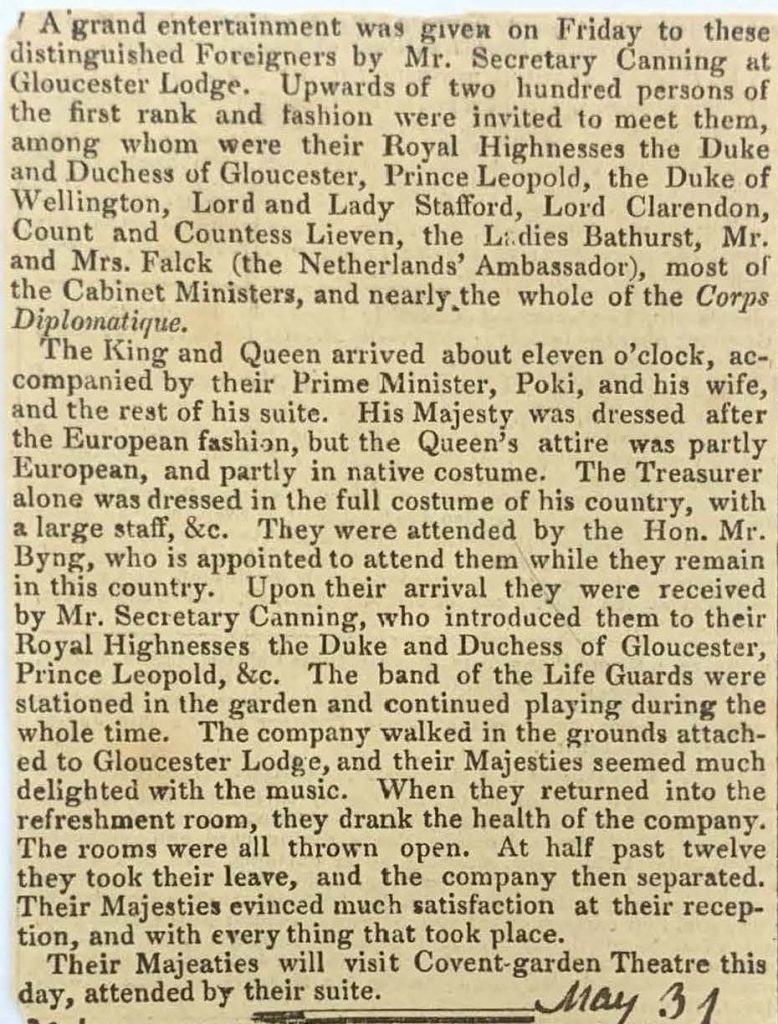
Courtesy of the Hawaiʻi State Archives.
Liholiho mā traveled from Portsmouth to London, by carriage, within a day (stated in his letter to Kalaimoku folks tracking by the moon phase of that evening) and arrive at their lodging in Adelphi at the Osborne’s Hotel on May 18th, 1824. Liholiho mā stayed in their hotel room for a few days while the King rested and healed from the Measles. With the fascination of the King and Queen of the Sandwich Isles being in London, many spectators followed the King and Queen everywhere, even visiting them at the Osbourne Hotel in Adelphi. In many reports published in the Great Britain speaks about the performances done for the King and Queen right outside their window and the King and Queen would throw money down for great performance. One cartoon (below in the visual resource gallery) mimics the play by Punch, a comedy puppet play famous in London, done outside of the suite of Liholiho, with the aliʻi and his royal suite peaking out of their windows, enjoying the performance while spectators got a closer look of the Natives of the Sandwich Isle. The King of Great Britain did not forget the King and Queen of the Sandwich Isles though, as he set up Secretary Canning up in hosting their guests around town. He set up a party in honor of these royals at Gloucester Lodge where Liholiho, Kamāmalu and their Royal Suite met the royalty of the United Kingdom, with upwards of 200 people invited of high rank. The party for the Sandwich Isles royals was filled with guests, entertainment, food and drinks. By this time, the King and Queen were gaining accustom to the style of dressing and the King, reported in the Morning Herald, dressed in English attire while Kamāmalu came dressed in part English attire while also wearing native garments.
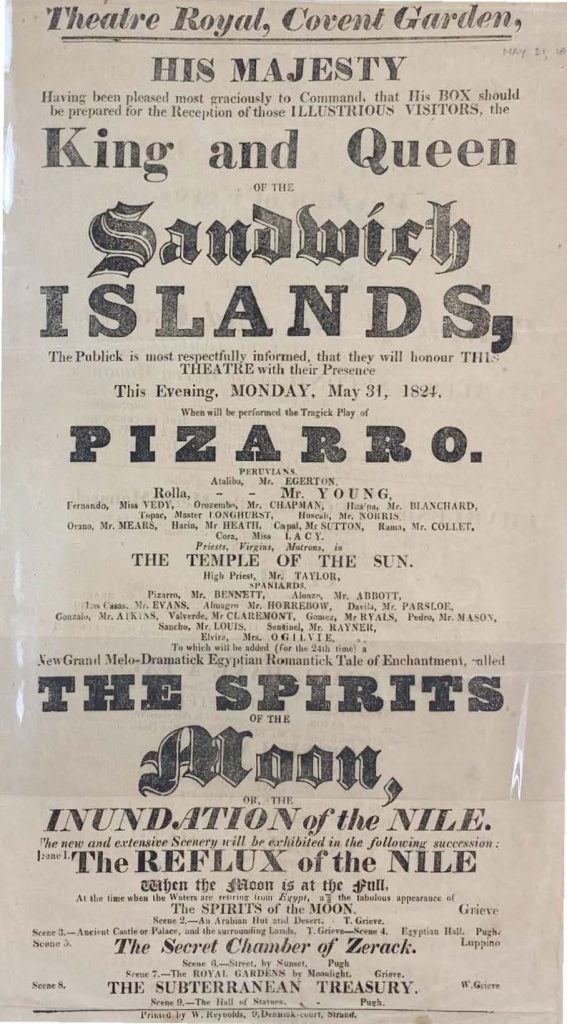
In that same Morning Herald, they report the attendance of the Liholiho, Kamāmalu and their Royal Suite on May 31st with a special performance dedicated to them with the plays Pizzaro and The Spirits of the Moon. Other newspapers recount that same night as well, with the privilege that Liholiho had to seat in the King’s theatre box, it was mentioned that a lot of people paid close attention from the King and Queen over the actual play. Nevertheless, the King and Queen were reported to be entertained that night and continued on their journey through London being hosted by the Honorable Mr. Byng. They go onto watch another play at the Theatre Royal, Drury Lane, a few days later, which we visited today on our tour of London by Craig Howes, and also at the King’s Theatre. Though the plays they attended, they were entertained by the different culture England had, to say the least, exploring what they could at the time while being sick here and there. Eventually, the King is rid of his measles and schedules a meeting with Liholiho and Kamāmalu for June 21st, 1824. Unfortunately, throughout the month of June, the entire Royal Suite, alongside Liholiho and Kamāmalu, are also sick with what seemed to be the measles as well. They fluctuate in health and eventually, Kamāmalu falls in sickness to a critical state in her health. When King George IV hears about this, he sends his doctors to take care of the King and Queen of the Sandwich Isles, to help them with their illness.
Unfortunately, Queen Kamāmalu passes away on July 8, 1824 at the Osborne’s Hotel in Adelphi, where she is accompanied by Liholiho and the doctors who took care of King George IV. Liholiho mourns of her death and becomes depressed to the point of that depression affecting his health as he battled his illness. Liholiho requests for the body of Kamāmalu to be placed at St. Martins in the Field, another place we visited today, in a crypt where she can lay to rest as he strived to get better. Liholiho moves from the Osborne’s Hotel in Adelphi to the Caledonian Hotel a few blocks down to be in a new space, surrounded by those who traveled with him to England. Within a few days of Kamāmalu’s death, Liholiho passes away on July 15, 1824 at the Caledonian Hotel, with Kekūanāoʻa, Boki, Liliha and John Rives. The British press covered the death of the King and Queen for a few days, reporting the reasons for their deaths and some of the highlights (or continued ridicule) of the King’s visit to England. Liholiho ʻIolani joined Kamāmalu at St. Martin’s in the Field, embalmed and laid to rest in a crypt until they were taken back home in 1825.
Physician’s report stating Liholiho and Kamāmalu’s death on July 1824. Photos courtesy of Hawaiʻi State Archives.
Kekūanāoʻa and Boki continued the duty to meet the King while there, confirming the alliance and protection of Great Britain over those who landed in Hawaiʻi. King George IV, according to Kekūanāoʻa’s response in the October 18, 1851 edition of The Polynesian, responses to Boki “I have heard these words, I will attend to the evil from without. The evils within your kingdom, it is not for me to regard—they are with yourselves. Return and say to the king—to Kaahumanu and Kalaimoku, I will watch over your country—I will not take possession of it for mine—but I will watch over it, lest evil should come from others to the kingdom. I, therefore, will watch over him, agreeably to those ancient words.” With these words, confirmed the expedition of Liholiho mā a success, though the King and Queen, along with others in their suite, passed away. The two who bring back the bodies of Liholiho and Kamāmalu with Lord Byron of H.M.S. Blonde, is James Young Kanehoa and Kekūanāoʻa, in 1825, where the people of Hawaiʻi are weeping of their deaths written in Lord Byron and Charles Steward’s notes upon arrival.
Liholiho, Kamāmalu and the Royal Suite’s expedition to England tells a story of international diplomacy and the importance of it to the Hawaiian Kingdom early on in the 19th century. Though in many ways Liholiho mā struggled through their journey in leaving home, they continued their journey in hopes to better their country and lāhui, building pilina and establishing our country with others. With our 2019 Hawaiian Youths Abroad journey to Europe, I hope this piece of history inspires our traveling in understanding and incorporating our moʻolelo into our community for our future so they may understand and incorporate these stories into their lives as well. Ke aloha nō iā ʻoukou āpau, mahalo.

“King Rhio Rhio and Queen Kamehameha delighted at the Performance of Punch”, image courtesy of National Archives of Australia 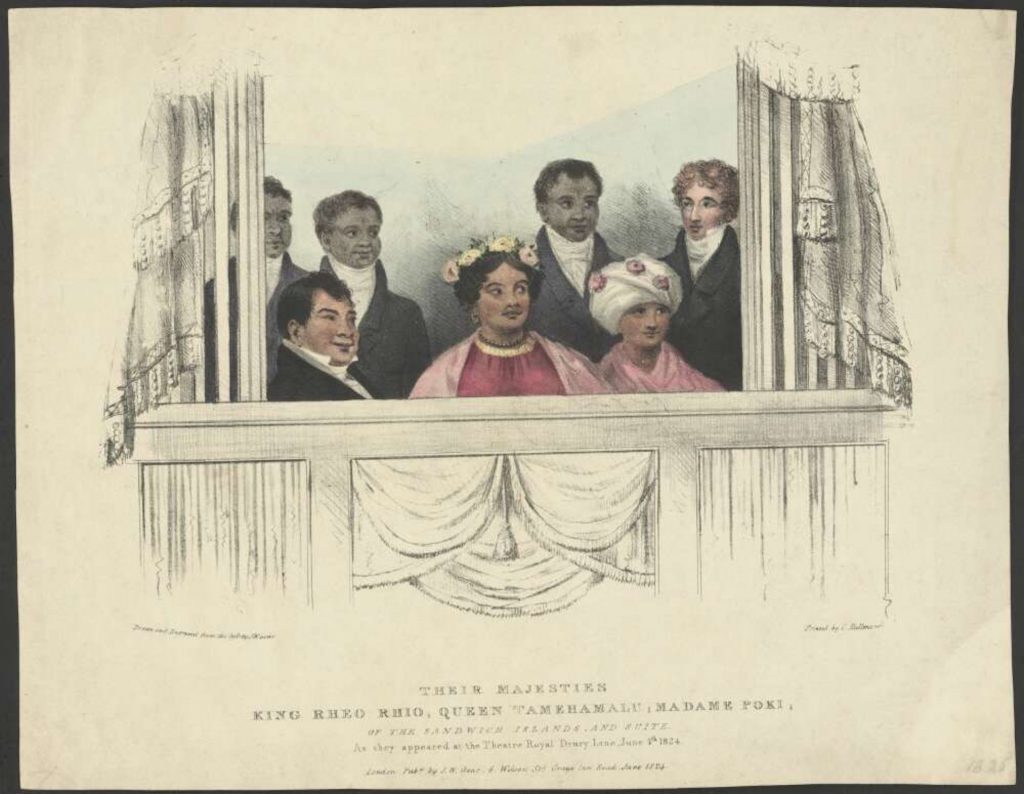
Liholiho and Royal Suite at Royal Theatre Drury Lane 
Liholiho and Royal Suite at Convent Garden Theater 
“Robeing Royalty, a treat for the Sandwichers, at the sign of Hog in Armor.” Image courtesy of National Archives of Australia.
[1] Malama, used in context to “monthly expectations” or used as the “months” throughout the year. Liholiho used the malama a part of the kaulana mahina (moon phase) system to describe their activities in Europe, alongside the Gregorian calendar.
[2] “Letter from Iolani to Paalua, Kaahumu and my younger brother (Kauikeaouli)”, courtesy of the Hawaiʻi State Archives, F.O & EX 402-2-14.
[3] The “Royal Suite” was used by many British presses during the time of Liholiho and Kamāmalu’s visit to Europe to recognize those traveled with them to Europe. Those who traveled with them during this trip is stated above in the moʻolelo of their travels to Europe.
[4] Kamakau, S.M.. “Rule and Death of Liholiho”, Ruling Chiefs of Hawaiʻi, Revised Version. (Honolulu: Kamehameha Schools Press), pg. 255-258.
[5] Liholiho ʻIolani and Kamāmalu’s father being Kamehameha I. Liholiho was born to Kamehameha I and Keopuolani while Kamāmalu was born to Kamehameha and Kahiehiemālie.
[6] Many states that the reasoning for the detour was unknown, but some sources mention the need for supplies of the ship by Valentine and shipmates was needed.
[7] “Letter from Karaimoku to Rihoriho”, courtesy of the Hawaiʻi State Archives, F.O & EX 402-2-14; a side note to point out: this latter, confirms in many ways the beginnings of the palapala, or literacy and writing language, occurring in Hawaiʻi.
[8] Liholiho mā, I will refer to including but not downgrade their status, Kamāmalu and their Royal Suite of Bok, Liliha, Kekuanaoa, James Kanehoa, John Rives, etc.
[9] Corley, J. Susan. “The British Press Greets the King of the Sandwich Islands: Kamehameha II in London, 1824”, The Hawaiian Journal of History, Vol. 42 (Honolulu, The Hawaiian Journal of History), 2008.

